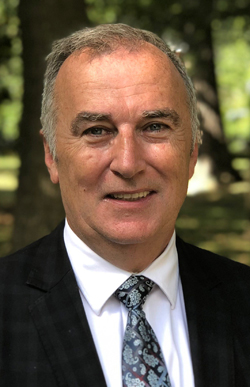Enhanced broadband internet fund includes underserved Bay of Quinte: MP Ellis
Administrator | Nov 10, 2020 | Comments 3
Following delays related to the COVID-19 pandemic, Bay of Quinte MP Neil Ellis reports the Liberal government is now on track to connect 98 per cent of Canadians to high-speed internet by 2026.

Neil Ellis, Bay of Quinte MP
“COVID-19 has altered everything about our way of life. It has exposed and compounded existing inequalities and vulnerabilities and has hit rural communities hard,” he stated in a news release from his office. “For too many residents in the Bay of Quinte, lack of access to reliable high-speed internet has a dramatic impact on quality of life. Now, more than ever, everyone needs reliable access to high-speed Internet as we work, learn and keep in touch with friends and family from home.”
Prime Minister Justin Trudeau made the announcement to launch the $1.75 billion universal broadband fund – a program unveiled in the 2019 budget and highlighted in September’s throne speech.
“We are already seeing results, having had approved projects and programs that will connect more than 1.7 million Canadian households to better, faster internet,” said Ellis.
The enhanced and expanded Universal Broadband Fund (UBF), he said, includes underserved communities in the Bay of Quinte.
“Originally designed as a $1 billion program, the government has increased funding for UBF to $1.75 billion, recognizing the need to act swiftly to connect all Canadians. That’s why the program now includes the Rapid Response Stream, an accelerated application process that will allow shovel-ready projects to get started right away. The application period is now open and community partners are encouraged to apply for funding.”
He notes the government is also committing $600 million to secure low-earth-orbit satellite capacity through Telesat, to provide high-speed internet to the most rural and remote parts of Canada.
“Canada’s economic recovery will depend on strength, innovation and growth of rural communities. Access to high-speed internet is essential to ensuring they are included in, and can help drive, the country’s economy as we recover from this crisis.”
About $150 million is to be freed up for projects ready to be connected next fall but decisions on who gets upgraded will depend on the service providers applying.
The CRTC declared broadband internet a basic service in 2016 with data suggesting just 41 per cent of rural Canadian households having access to download speeds of at least 50 megabits per second (Mbps) and upload speeds of 10 Mbps.
Amid a meeting of council fraught with connection issues for participants in September, David Fell, of the Eastern Ontario Regional Network (EORN) said there’s still a long way to go for quality connections.
EORN’s project goals are to achieve 99 per cent coverage in eastern Ontario to make and receive voice cell phone calls and 95 per cent coverage with standard definition service which can support email, web browsing and social media services. It seeks 85 per cent coverage with high definition service which can support video conferencing, movie streaming and other more data intensive applications.
Fell stated a $500-to-$750 million cost to bring 50/10 Mbps to 95 per cent of the demand across the region (using a mixture of 75 per cent wireline (1Gbps capable) and 20 per cent fixed wireless across the region for a minimum of 90 per cent of each county’s demand. Prince Edward County’s estimated cost would be $13,314,199.
Estimated cost to bring the faster 1 Gbps service to 95 per cent of the demand across the region using a wireline is $1.2-to-$1.6 billion. Prince Edward County’s estimated cost would be $40,842,590.
EORN is aiming for the faster rates as technology advances quickly. Broadband system equipment, he said, needs to be upgraded every five years, while fibre technology has a 20-25 year lifespan.
Prince Edward County has so far invested $300,000, and is committed to $500,000.
He added municipalities can help by providing land for telecom service providers to consider tower builds, have tower siting plans in place and expedite permits.
Filed Under: Local News
About the Author:

































Very happy with 5G from Eastlink
Bell has new wireless home internet for rural customers, 25 down and 1up and 50 down and 10 up in some places. Much better than other brands.
Inquire about availability if you live in the county before all the towers are full.
Government plans are always scheduled for 5 years into the future, which is pushed out one year every year, so we never get there.
Here in the County, terrestrial wireless service (e.g. Xplornet) ranges from good to terrible, more often the latter. Towers get overloaded, and capacity upgrades are slow in coming, or not at all.
Fortunately, the Starlink service — low-earth satellites from SpaceX — is just around the corner. Should be available to everyone in the area with a view of the northern sky in 2021. Speeds of at least 50 Mbps down, 10 Mbps up. Cost about $130 per month, with $650 up front for equipment. Not cheap, but worth it rather than waiting for other services that never come.